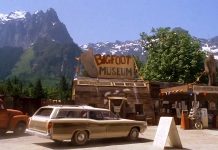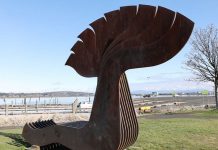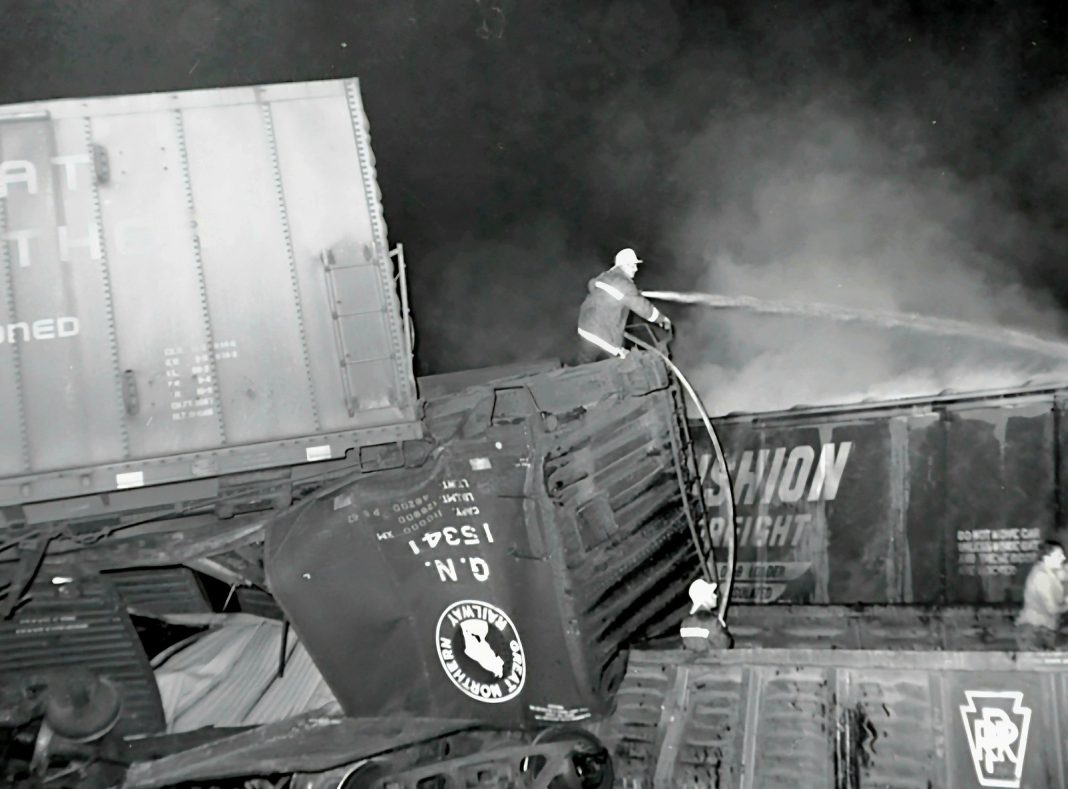In the quiet stillness of the early morning of June 6, 1969, the sleepy town of Marysville was violently awakened by the deafening roar of a catastrophic crash that would forever haunt the otherwise peaceful coastal city. At precisely 3:44 a.m., a speeding freight train, traveling at an alarming 63 miles per hour, barrels into a caboose and three freight cars that sat unsuspectingly on the main track in front of the Marysville Great Northern Depot. The impact would prove devastating, causing over an estimated $1 million in damages as it destroys the depot and claims the lives of two men in its wake while also injuring two others. The unthinkable tragedy would forever be remembered as the worst train wreck in Marysville history.
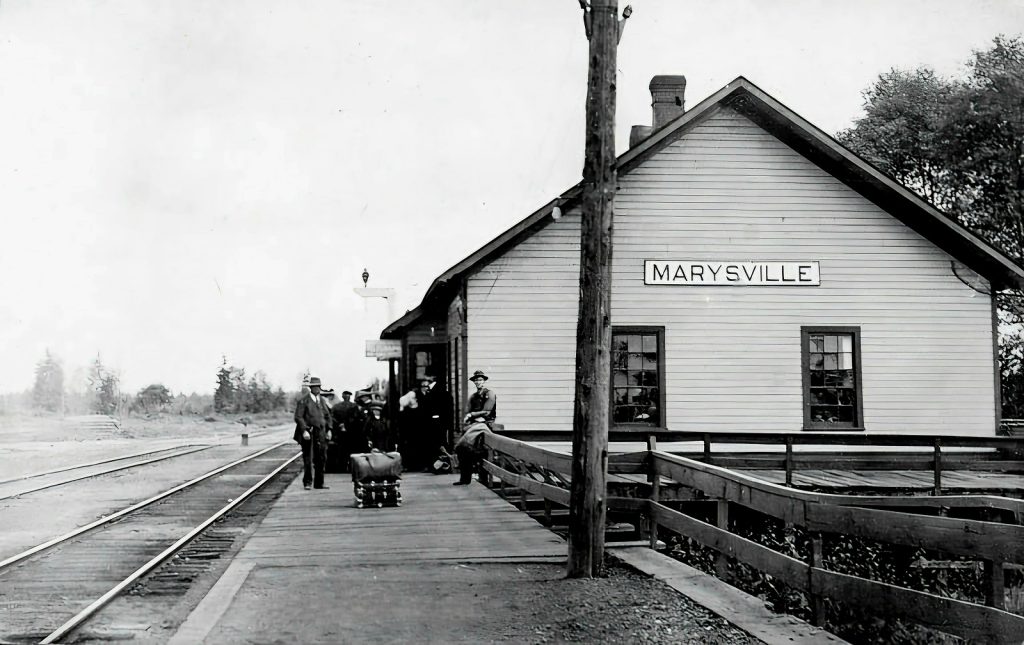
A Runaway Train Races Toward Marysville in the Early Morning Hours of June 6, 1969
It was a night like any other when the 35-car Great Northing Railway freight train departed from Vancouver, only later to be found racing south through Snohomish County towards Marysville. In its rush, it blew past two warning semaphore signals as it made its full-throttled journey toward the city that was already fast asleep. The first signal was a warning, ordering the train to slow down to 30 m.p.h., and the second ordered the train to stop, but instead, it continued to speed into downtown Marysville.
The wild locomotive caught the attention of Marysville police sergeant Tom Hoistad and Officer Robert Curtiss as they rode along State Avenue during a routine patrol. Hoistad knew the through-town speed limit for trains was 25 mph and that this particular iron horse was going nearly 40 mph over. Still, the officers knew there wasn’t much they could immediately do but follow the train, but nothing could prepare them or the town for what came next.
Ahead, the Marysville Great Northern Depot sat between Cedar and Delta avenues and 5th and 6th streets, east of the tracks. The depot had been a welcoming hub for the city since its creation in 1891, the same year that Marysville was incorporated, making it as old as the city itself. On this particular night, two flatcars loaded with telephone poles, a boxcar, and a caboose were sitting on the main track in front of the depot. Off to the side, a five-member crew was switching an engine and two cars. Two crewmen were in the engine. None of them would have time to prepare for the oncoming crash.
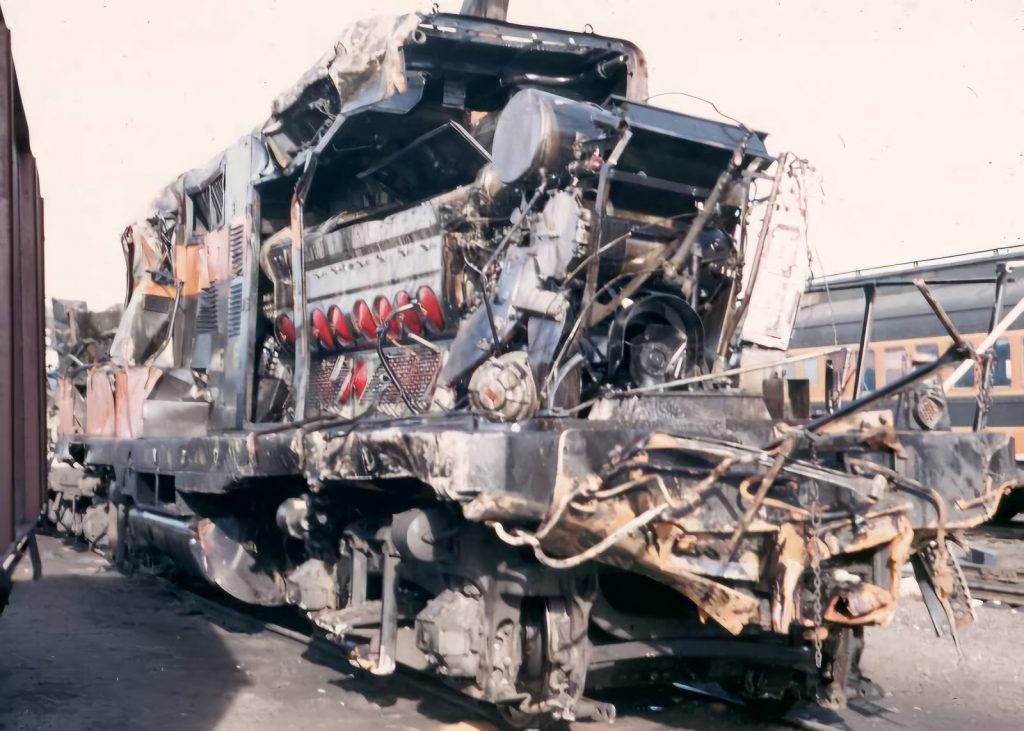
The Catastrophic Impact of the Marysville Train Wreck
At 3:44 a.m., crushing metal and screeching wheels pierced the night air as the speeding freight train roared into the station, plowing into the stationary caboose and the three freight cars parked in front of the depot. The impact catapulted the cars into the other nearby cars and engine the crewmen were working on.
A nearby service station attendant idly listening to the switch engine work found the typical hustle and bustle of work interrupted by the onrushing freight train and thunderous impact. In later interviews, he would tell the press that the ground shook like an earthquake. As he described it, it appeared as if all hell were breaking loose right before his very eyes as train cars shot into the air clean over the top of each other. Parts flying about in complete disarray, with flashes of light intermittently piercing the night, each burst to reveal the devastation of the crash as if taking snapshots of the scene in a grim sequence.
The cars sitting in front of the depot were pushed more than three blocks south to 2nd Street by the force of the impact as they were plowed into at an unrelenting 63 mph. Twenty cars were derailed, scattering the wreckage approximately 400 feet along the track between 2nd and 6th streets, with some of the cars being knocked up to 50 feet away from the tracks. The wheel assemblies from some of the cars were torn off and hurled 200 feet through the air.
One of the cars crashed into the depot itself, tearing through about a quarter of the building on its southwestern side and heavily damaging the rest of the station. Flying debris ripped telephone and electrical lines from their poles. In the wake of the collision, the wall clock stopped dead in its tracks, capturing the precise time of what would quickly be discovered as a deadly disaster.
In the aftermath, a number of the demolished cars burst into 20-foot flames. Firefighters from Marysville, Getchell, Midway, and Everett responded and, thankfully, had them out by 7 a.m. First responders would also experience a brief scare upon stumbling on a boxcar that was labeled explosives and another overturned car that was labeled chlorine. Fortunately, these two cars were empty, and in fact, 34 of the 35 freight cars on the speeding train were empty. The empty cars were a small mercy in an otherwise tragic event; had they been loaded, the devastation would have been unfathomable.
Also threatening to cause further destruction, as officers arrived on the scene that would get another scare as Stanwood police would notify Marysville that another southbound train was approaching and that they had been unsuccessful in alerting it to the wreckage it was sure to collide with up ahead. The Washington State Patrol raced toward north Marysville to put flares onto the tracks and stop the other oncoming train.
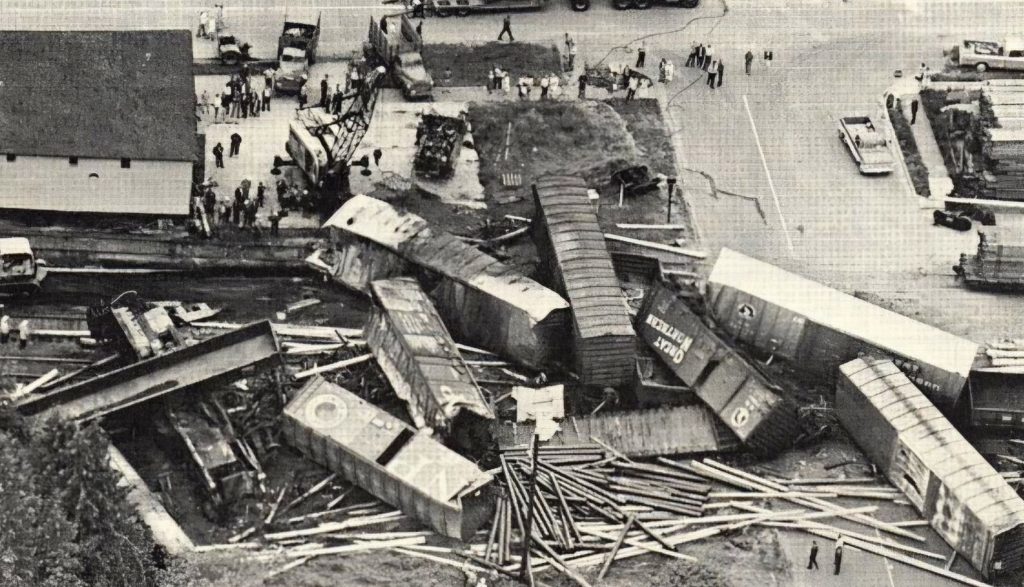
Manslaughter and Malfunction: Investigating the Worst Train Wreck in Marysville History
After surveying the scene, it was discovered that from the cars being switched by the crew near the depot, the top of the engine on the siding had been ripped off by the impact, throwing the two trainmen from the cab and killing them instantly. These men were identified as Joe Haegely, approximately 42 years of age from Seattle, and Howard Dearing, 27, of Marysville.
The engineer of the speeding train, John Schlosstein, age 66, of Seattle, sustained arm lacerations but was quickly discharged from the hospital after treatment. It was the front brakeman on the same train, Hardy Clay, age 22 and also of Seattle, who would sustain more serious injuries to his chest and head but ultimately survived.
A swift investigation by Great Northern revealed that Schlosstein had been “unconscious” prior to the collision, which was believed to have been caused by adverse effects from medication that he was taking. It was also determined that Clay contributed to the accident by failing to maintain a proper lookout as the train approached the station.
Interestingly, Schlosstein had been the engineer on the train’s previous trip to Vancouver just a day or so earlier. In his defense, he claimed that the Alertor safety control system in the engineer’s seat was not functioning during the previous trip. This was an electric system designed specifically for trains with a built-in antenna in the engineer’s seat designed to detect motion. If no movement were detected in the seat within 20 seconds, an alarm would sound to alert and potentially wake those on board; if no movement were detected for another ten seconds, the train’s brakes would automatically apply to stop the uncontrolled locomotive.
Per protocol, such a malfunction was required to be reported immediately, which Schlosstein failed to do. An investigation post-accident revealed that the Alertor system had been tested in Vancouver and was confirmed to be operational before the train’s departure for the southbound trip. When it was tested after the accident, it was shown to be working.
A closer look at the Alertor revealed that at some point after leaving the Vancouver engine house, the mechanism had likely been disabled or cut out of the seat. It was believed the engineer may have done this so he could use his own rubber seat pad without interfering with the Alertor’s built-in antenna. The fear was that the use of the rubber seat would inhibit its ability to detect motion and thus trigger undesired brake applications.
As a consequence of his actions, Schlosstein was later convicted of two counts of manslaughter in Snohomish County Superior Court in 1970.
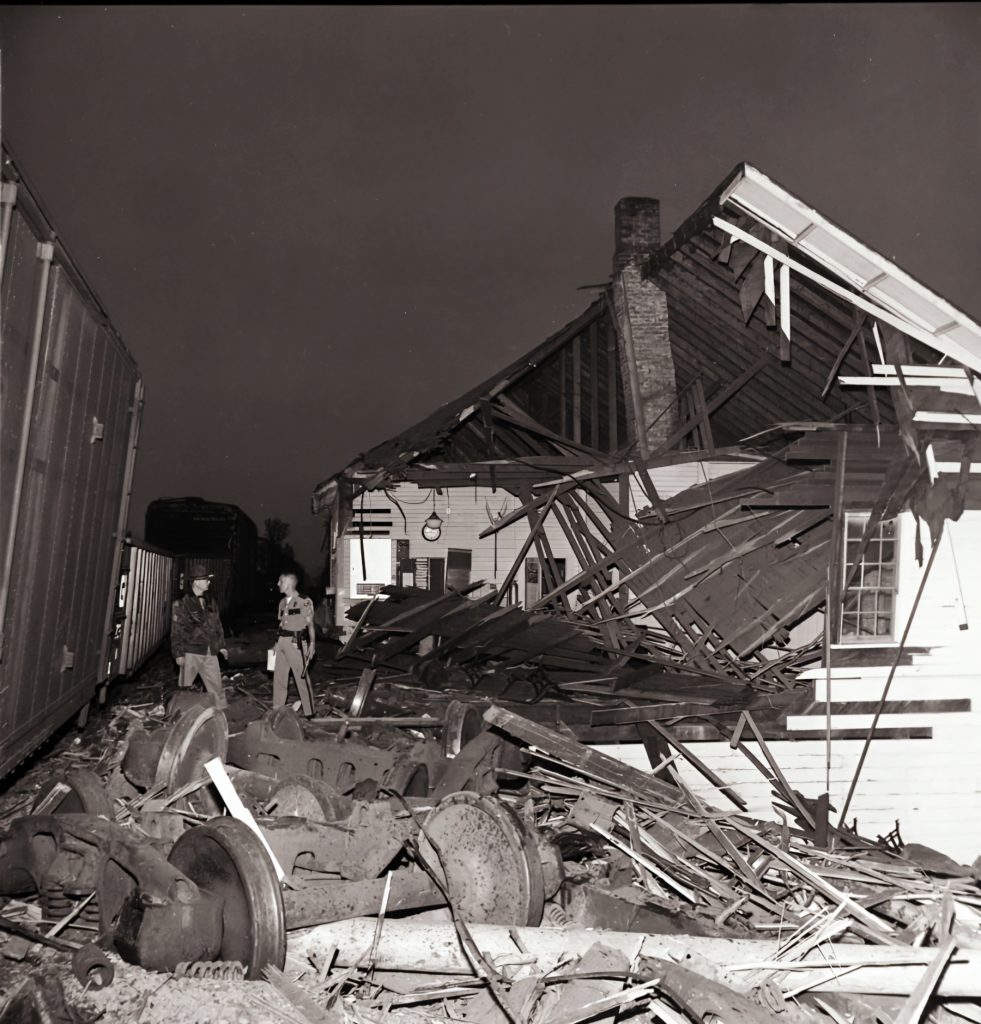
Remembering the Marysville Train Wreck and its Aftermath
Removing all the railroad cars from the crash scene would take more than four days. As the worst train wreck in Marysville history, it naturally drew the morbidly curious to the scene of the crime. Over the next several days, onlookers descending upon Marysville to view the carnage for themselves caused several traffic jams and hindered clean-up efforts, further adding to the chaos.
Several weeks after the accident, people were still picking up scattered remains from the crash site. Work was done to repair the mainline, but the Marysville depot itself was so heavily damaged by the impact that what was left of the building was torn down within a week. The Marysville depot was never rebuilt, its absence a stark reminder of an unthinkable tragedy that would forever alter the city’s landscape.





